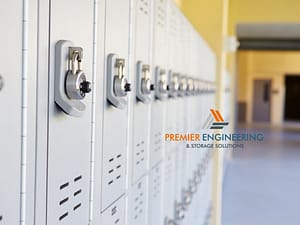Securing Continuity: The Imperative for Emergency Power Solutions
In today’s commercial landscape, uninterrupted operations are not just a goal but a necessity. The reliance on electrical power spans every aspect of business activity, making emergency power solutions critical in safeguarding against unexpected power outages. These systems ensure that businesses can maintain continuity in their operations, protecting assets, data, and ultimately, their bottom line.
Understanding Emergency Power Systems
- Types of Emergency Power Systems: The array of emergency power solutions available to commercial properties includes standby generators, uninterruptible power supplies (UPS), and battery backup systems. Each type serves a distinct purpose, from providing immediate power to critical systems during an outage to ensuring a seamless transition to a backup power source.
- Operational Principles: At the heart of these systems is a simple yet profound principle: to provide reliable power in the absence of the main electricity supply. Standby generators convert mechanical energy into electrical power, typically using diesel, natural gas, or propane. UPS systems, on the other hand, store electricity in batteries and then invert it back to usable AC power when needed. The choice between these systems—or a combination thereof—depends on the specific needs and circumstances of the commercial property.
Designing Emergency Power Solutions for Commercial Needs
- Assessing Power Needs: Determining the right emergency power solution begins with a thorough assessment of a property’s power needs. This involves identifying critical systems that require uninterrupted power, such as security systems, data centers, and lighting, to ensure safety and operational continuity.
- System Design Considerations: Key factors influencing the design of an emergency power system include the total power requirements, the duration for which backup power is needed, and the scalability of the system. Energy efficiency and environmental impact are also crucial considerations, guiding the selection of fuel types and technologies.
Installation Challenges and Best Practices
Overcoming Installation Obstacles: Installing emergency power systems in commercial properties presents unique challenges. Space constraints, especially in urban settings, can limit options for generator placement. Additionally, noise regulations may restrict the use of certain types of generators. To navigate these challenges, strategic planning and consultation with experts are essential.
Best Practices for Installation:
- Strategic Placement: For generators, select a location that is easily accessible for maintenance, yet distant enough from operational spaces to mitigate noise and vibration. UPS systems should be housed in climate-controlled environments to ensure optimal performance.
- Compliance with Regulations: Adhere to all local and national electrical codes and standards. This includes securing necessary permits and ensuring that the installation is performed by licensed professionals.
- Coordination with Utility Providers: In cases where the system will interact with the grid, such as with certain types of renewable energy backups, coordination with local utility providers is crucial to ensure compliance and safety.
Strategic Planning and Cost Management
- Budgeting for Emergency Power: Implementing an emergency power solution requires a careful analysis of initial investments, ongoing operational costs, and potential financial benefits. Initial costs include the purchase of the system, installation, and any modifications to existing infrastructure. Operational costs encompass fuel (for generators), maintenance, and repairs. Businesses must weigh these expenses against the potential cost of downtime to determine the most economically viable solution.
- Return on Investment (ROI): The ROI of an emergency power system is measured not only in direct financial terms but also in terms of resilience and continuity. Businesses can calculate ROI by comparing the system’s cost against savings from avoided downtime, preserved product integrity (for industries like food service or pharmaceuticals), and even potential reductions in insurance premiums due to increased property protection.
- Grants and Incentives: To offset some of the costs associated with emergency power systems, businesses should explore available grants, incentives, and rebates, especially for systems that utilize renewable energy sources or contribute to reduced grid reliance. These financial incentives can make more advanced and environmentally friendly systems financially feasible.
The Future of Emergency Power in Commercial Properties
- Emerging Technologies: The future of emergency power solutions is being shaped by advancements in renewable energy, battery storage technology, and smart grid integration. Solar-powered backup systems, more efficient battery solutions, and systems that can intelligently manage power distribution during outages are on the horizon. These technologies promise to enhance the sustainability and efficiency of emergency power systems.
- Adapting to the Evolving Energy Landscape: As the global energy landscape shifts towards a more sustainable and decentralized model, commercial properties must adapt their emergency power strategies accordingly. This includes embracing renewable energy sources, integrating smart technologies that can predict and respond to power needs in real-time, and designing systems that contribute to broader energy resilience and sustainability goals.
Conclusion: Empowering Resilience in Commercial Spaces
The integration of emergency power solutions is a critical component of modern commercial property management, ensuring operational continuity and safeguarding against the potential financial and reputational damage caused by power outages. By investing in reliable emergency power systems, engaging in strategic planning, and adopting best practices for installation and maintenance, businesses can significantly enhance their resilience.







